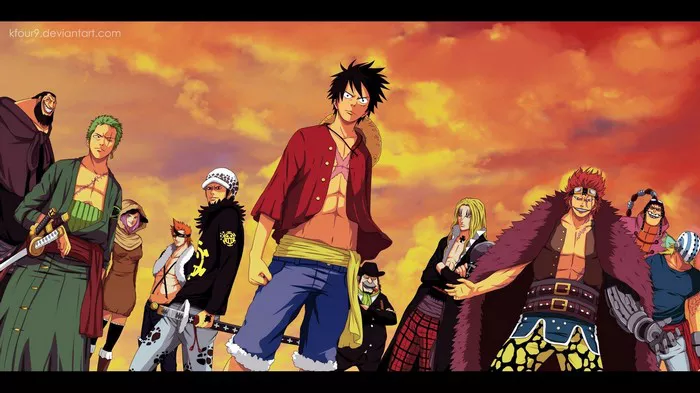Monkey D. Luffy, the beloved protagonist of the long-running manga and anime series “One Piece,” created by Eiichiro Oda, stands out for several reasons: his indomitable will, his ability to inspire loyalty, his dream to become the Pirate King, and notably, his physical stature. Despite being a formidable pirate, why is Luffy shorter than many of his peers and rivals? This article delves into the reasons behind his height, exploring how it influences both the narrative and the viewer’s perception of his character.
Understanding Character Design in Anime
The Basics of Anime Character Design
In the realm of anime and manga, characters are designed with specific traits to reflect their personality and role in the story. Height, in particular, can convey a lot about a character’s age, status, and power. However, it can also be used to subvert expectations and create a unique dynamic within the series.
Height as a Tool for Characterization
Luffy’s shorter stature can be seen as a direct contrast to his larger-than-life ambitions and abilities. This contrast is a common technique in character design, often used to highlight a character’s unique qualities or their underdog status, making them more relatable and inspiring to the audience.
Cultural Context and Symbolism
The Underdog Trope in Japanese Media
Japanese media often features underdog protagonists who defy the odds to achieve their dreams. Luffy’s height subtly reinforces his role as an underdog, emphasizing his ordinary origins and extraordinary goals.
Symbolism in Luffy’s Stature
In many cultures, height is associated with power and authority. By making Luffy shorter, Oda may be critiquing or rejecting the idea that physical traits necessarily correlate with one’s ability to lead or impact the world.
Luffy’s Height in Relation to Other Characters
Comparison with Peers and Antagonists
Within “One Piece,” many significant characters are depicted as physically imposing. Characters like Whitebeard, Big Mom, and Kaido are not only tall but almost giant-like. Luffy’s shorter stature sets him apart visually and symbolically, emphasizing his role as the challenger to these established powers.
The Impact on Relationships and Dynamics
Luffy’s interactions with other characters are not hindered by his height; if anything, it adds depth to his relationships. His stature often leads others to underestimate him, allowing for surprising moments of triumph and leadership that further endear him to both his crew and the audience.
Fan Perception and Reception
Audience Relatability
Luffy’s less imposing figure makes him more accessible and relatable to a wide audience, including younger viewers. Fans can see themselves in Luffy, resonating with his determination and resilience rather than his physical characteristics.
Height and Humor in One Piece
“One Piece” frequently uses physical characteristics for comedic effect. Luffy’s height often plays into visual gags or humorous situations, which enhances the light-hearted and whimsical tone of the series despite its serious themes.
Narrative Significance of Luffy’s Stature
Enhancing the Theme of Willpower Over Strength
“One Piece” consistently emphasizes that willpower and determination are more important than physical attributes like strength and height. Luffy embodies this theme, as his achievements are due to his indomitable spirit and not his physical size.
The Symbolic Growth of Luffy
While Luffy’s physical height remains relatively short, his growth as a character is significant. His journey from a small village to the grand line and beyond symbolizes a growth in maturity, skill, and influence, transcending physical dimensions.
Conclusion
Monkey D. Luffy’s shorter stature compared to other characters in “One Piece” is a deliberate choice by Eiichiro Oda that enriches the narrative and deepens the character’s appeal. It plays a crucial role in the thematic framework of the series, emphasizing that true greatness comes from within and is not dictated by outward appearances. Through Luffy, Oda challenges traditional notions of power and leadership, making an emphatic statement about the value of determination and heart in achieving one’s dreams. This character design choice not only adds depth to the protagonist’s role but also serves as an inspiring reminder that physical limitations do not define one’s potential or destiny.

